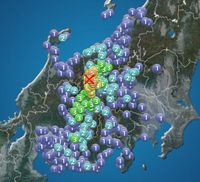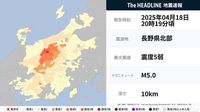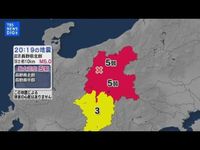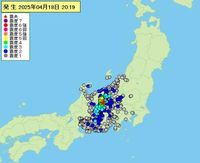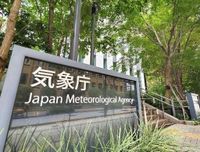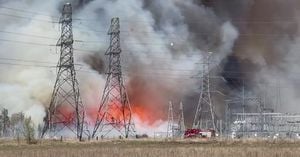On April 18, 2025, at 8:19 PM, a strong earthquake rattled Nagano Prefecture, registering a maximum seismic intensity of 5 lower. According to the Meteorological Agency, the earthquake's epicenter was located in the northern part of the prefecture, with a depth of approximately 10 kilometers and an estimated magnitude of 5.0.
This seismic event was significant enough to be felt across a wide area, with various locations reporting different levels of intensity. The strongest tremors, classified as seismic intensity 5 lower, were recorded in Omachi City, Ogawa Village, and Chikuhoku Village. Meanwhile, Nagano City, Matsumoto City, and Azumino City experienced a seismic intensity of 4.
In addition, several other municipalities, including Ueda City, Saku City, and Shiojiri City, reported a seismic intensity of 3. Residents across these areas felt the tremors, prompting many to take precautionary measures. However, the Meteorological Agency confirmed that there were no tsunami concerns following the earthquake.
Officials from the Omachi City Crisis Management Office reported that no significant damage was observed within city facilities. A spokesperson stated, "We have confirmed that there is no major damage within the city hall." This news was reassuring for residents who were understandably anxious following the quake.
In response to the earthquake, the Nagano Prefectural government established a crisis management meeting led by the head of the Crisis Management Department. This proactive approach aims to ensure the safety and preparedness of the local population in the event of aftershocks or related incidents.
Seismologists are continuously monitoring the situation, analyzing data to assess any potential aftershocks or changes in seismic activity. The earthquake's occurrence in a region known for its geological activity underscores the importance of disaster preparedness and public awareness.
Japan, located along the Pacific Ring of Fire, is no stranger to earthquakes. The country has experienced numerous seismic events throughout its history, prompting the government to implement strict building codes and disaster response protocols. This latest earthquake serves as a reminder of the ongoing need for vigilance and preparedness among residents.
As communities assess the impact of this earthquake, local authorities are urging residents to remain calm and stay informed. They recommend that individuals familiarize themselves with safety procedures and emergency contacts, ensuring that they are ready to respond effectively in the event of future seismic activity.
In the aftermath of the quake, social media platforms have been buzzing with reports from residents sharing their experiences. Many took to Twitter and Facebook to describe the tremors, with some expressing relief that the event did not result in significant damage or injuries.
"I was at home when it happened, and I felt the ground shake," one resident from Nagano City shared. "It was a little scary, but I’m glad to hear that everyone is safe." Such sentiments are common in the wake of seismic events, as communities come together to support one another during uncertain times.
As the situation continues to develop, the Meteorological Agency has urged residents to stay updated on potential aftershocks and to follow any advisories issued by local authorities. Preparedness remains a key focus, with emergency drills and educational campaigns being highlighted as essential components of community resilience.
In conclusion, while the earthquake on April 18 was a stark reminder of Japan's seismic risks, the quick response from local authorities and the resilience of the community highlight the importance of preparedness in mitigating the impact of such natural disasters. Residents are encouraged to stay informed and ready, ensuring that they can respond effectively in the face of future challenges.
